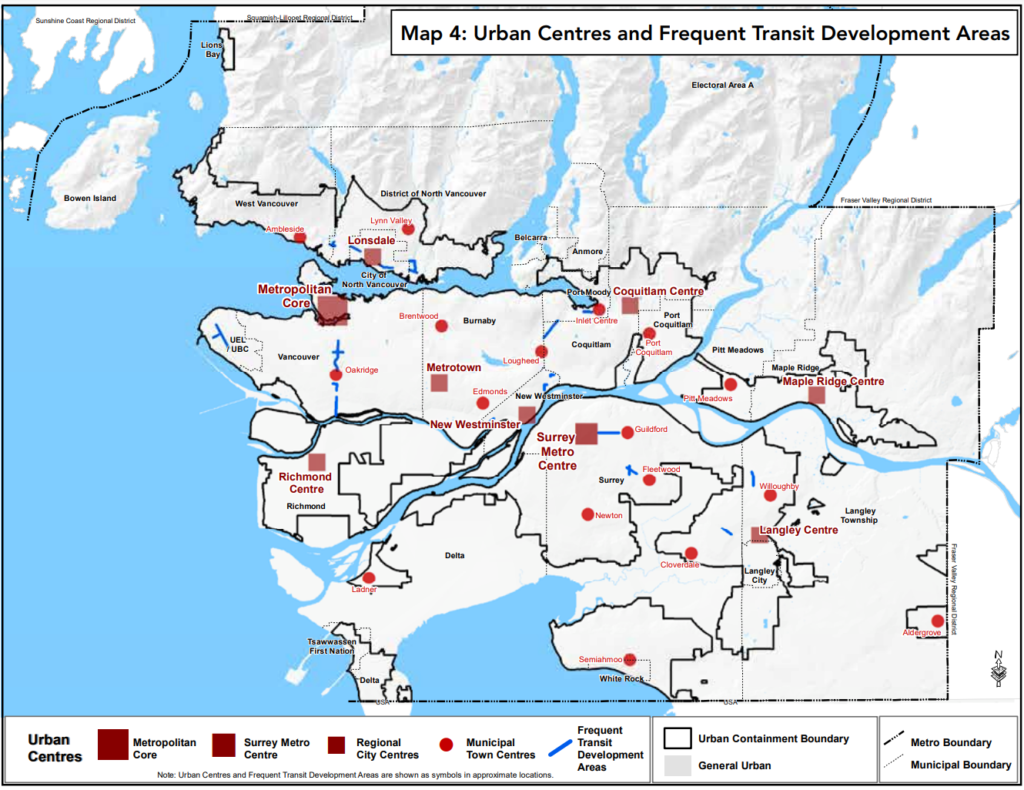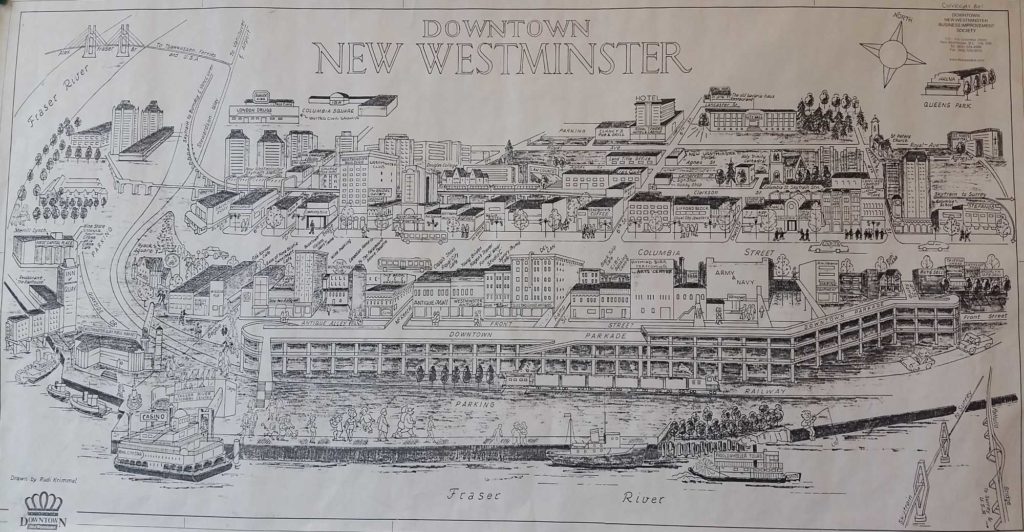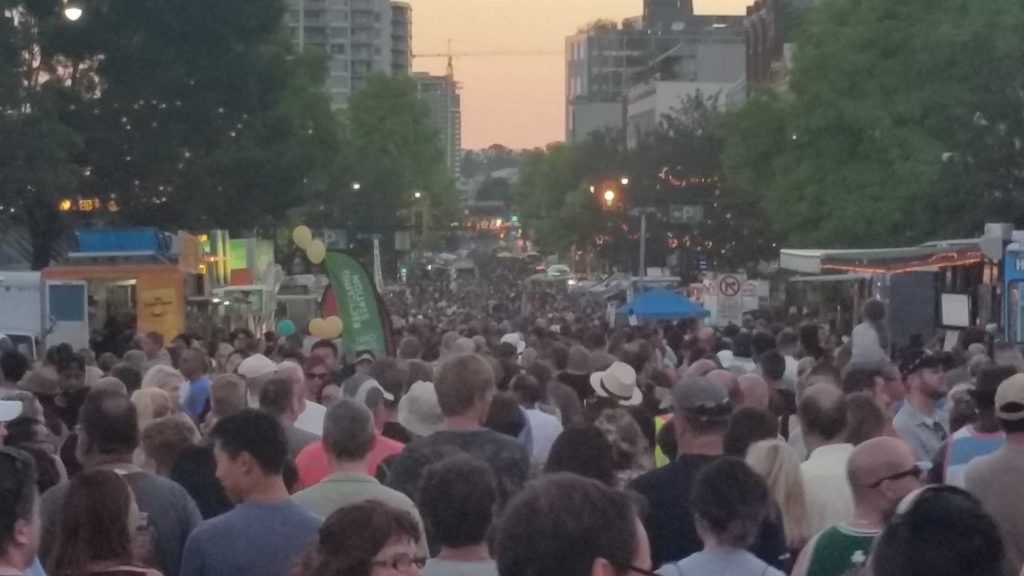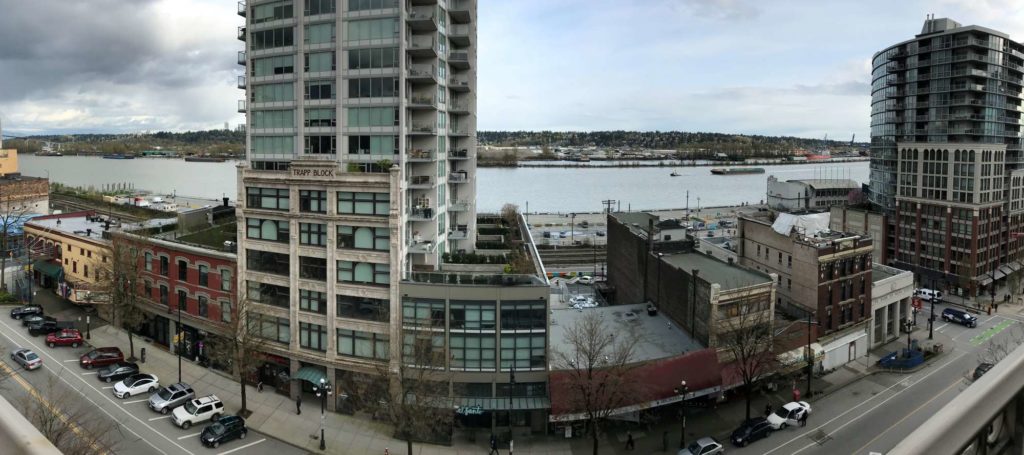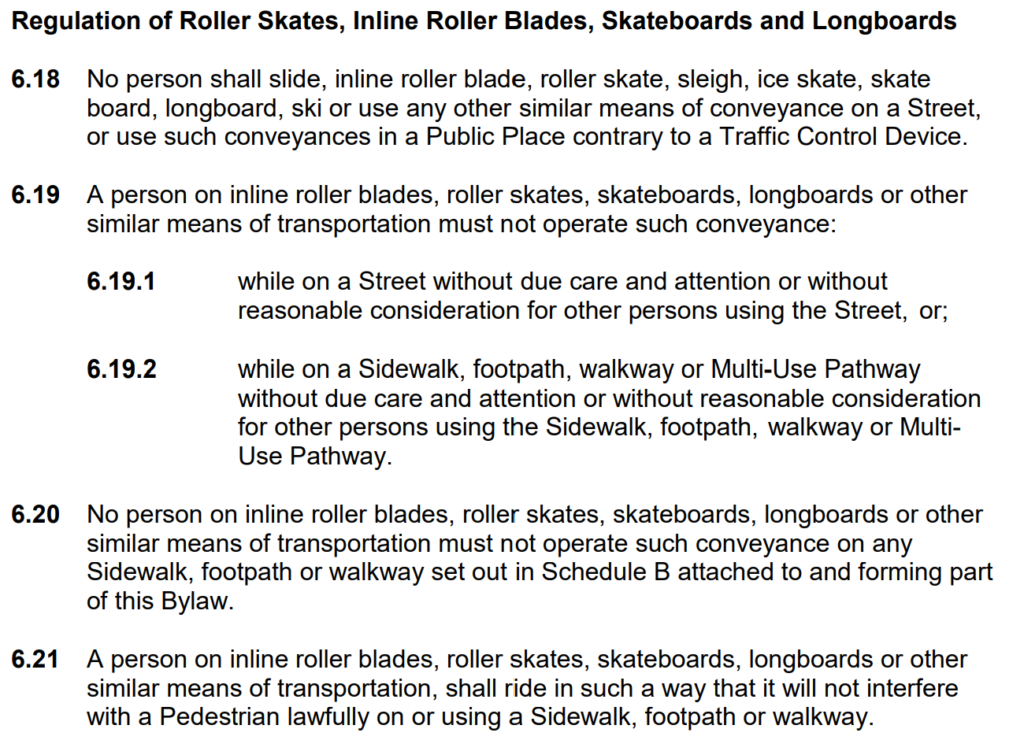Last Council meeting before we take a bit of a summer break, and the agenda was long. We started with a Presentation from staff:
City of New Westminster Sanctuary City Policy: Access to City Facilities, Programs and Services for All Community Members, Regardless of Immigration Status
The City, through a recommendation by our Multicultural Advisory Committee, is moving towards Sanctuary City status. That basically means we won’t limit people’s access to City services based on their immigration status. On one hand, not a big deal, because as a City we are not in the role of regulating immigration, so functionally, it doesn’t change how we operate. However this may make a huge difference to residents in precarious immigration situations who may live in our City, pay rent and taxes, and raise families here, in their being assured they have access to basic community services like the Library or recreation programming. This is, on the face of it, really simple: Where we have no legal, fiduciary, or due diligence reason to ask about immigration status, we are making it policy that we don’t ask about immigration status.
There are similar programs like this across Canada, and we are learning from their experience. There is a very small internal cost to this, mostly training for our own staff and a bit of communications materials to let the broader community and immigrant support agencies know what we are doing, which is covered by our existing DEIAR framework budget.
We then discussed Development Variance Permits:
DVP00687 for Modification to Alternative Parking Area for 230 Keary Street (Brewery District Building 8) The Brewery District wants to build a little less parking in their Building 8 by applying over-capacity parking from Building 7 and connecting the parkades. With about 2,500 underground parking spots on site (much more than the Bylaw requires), this is a reasonable request that will reduce construction cost, concrete, the depth they need to dig. They need a Variance to do that.
We sent out notice, and got correspondence from a neighbouring business who wants the tower built smaller. Council voted to approve the variance.
DVP00693 for Modification to Parking Requirements for 65 East Sixth Avenue (təməsewt̓xʷ Aquatic and Community Centre)
As we start building and honing the design of the new Recreation Centre, the site layout is being adjusted, and we will have slightly fewer parking spots than previously expected – which was already a variance, so we need to give another variance to reduce the number slightly more. We sent out notice on this, go three pieces of correspondence (one opposed, one asking questions, one in support), and moved to adopt the variance.
The following items were Moved on Consent:
Submission to the Department of Canadian Heritage Museum Assistance Program under the COVID-19 Reopening Fund
We were successful at getting some Federal emergency funding to support our Museum and Heritage program that was set back by COVID, and are applying for more in the second phase. Not as sexy as announcing SkyTrain funding, but a good thing for the Federal Government to support, and good news for our Museum and Archives.
Revised Attachment #7 for 2020 Statement of Financial Information
Attachment 7 of our SOFI released last meeting was wrong. A revised Attachment is attached. Please adjust your lifestyle accordingly.
Bylaw to Amend Delegation Bylaw No. 7176, 2015
A City can’t operate if Council and the CAO makes every decision – life comes at you fast in a $200Million operation. So there is a Bylaw that outlines the “Delegated Authority” in the City – who is allowed to make decisions on behalf Council and on behalf of Senior Management, and what type of decision can be delegated to what level. As roles in the City shift around through regular reorganization, we sometimes have to update this Bylaw. We are making three changes here. Now you know who to ask.
Recruitment 2021: Grant Committee Appointments
The City has three main Grant programs that give out a combined Million dollars every year. As we get many applications for these grants, we have committees of volunteers from the community sift through the applications and make recommendations to the Council about where the grant money should go. This report lists the volunteers who were selected from the public call for applicants to serve on those committees for 2021.
New Westminster Restart Plan – Council Meetings and Development Review Processes
The entire remote-via-Zoom-Council-Meeting thing has been under emergency orders from the Province, and in normal times we are supposed to meet in person both as Provincial guidance and due to our own Council Procedure Bylaw. As the State of Emergency has been lifted, we have 90 days to go back to the old ways. Except the Province has updated it regulations, and will provide the option for Council to meet in a virtual or hybrid manner at the end of that 90-day period. So we have to decide how we are going to meet, and update our Procedures Bylaw and our currently-Interim Development Application Review Process to be compliant.
We also reduced some review procedures during the Pandemic, having fewer applications go through LUPC and APC, which removed a step prior to them being publicly reviewed by Council. This meant 17 fewer Staff Report written, and weeks, or even months, of reduced review time for applicants.
For Council meetings, staff are recommending we move to a more Hybrid system that will have most (though not necessarily all) of Council present in the chambers, most staff present virtually, and allow the public to attend either in person or virtually. This is actually the most technically challenging approach, as “all virtual” or “all in person” are both easy, but technology challenges with the Hybrid system (including internet streaming lag issues and assuring we can all hear and see) will no doubt arise, but can be overcome.
We will also take this approach for Public Hearings, based on the success we had with virtual Public Hearings, but recognizing some Public want to attend in person, though we are going to keep a close eye on how crowd dynamics shake out in this model, and be willing to adapt as need be to assure Public Hearings remain respectful and inviting spaces.
It is interesting to think we should have been making these changes anyway, but the Pandemic response was the spark we needed to make the first rapid shift to virtual meeting, which opened staff and council up to considering why we have been doing things “the old way” for so long. We also needed the change in Provincial Regulation to allow it to happen. Thing is, we didn’t know we could do better and the regulations would not allow us to do better. There is a lesson in that.
330 East Columbia Street (Royal Columbian Hospital Redevelopment Project): Request for Exemption to Construction Noise Bylaw
A big one-day concrete pour (4,000 cubic metres! That is equivalent to filing an entire Canadian football field to knee-depth) has to happen in August at RCH, and they may not get in under our Construction Noise Bylaw time limits, so are asking for a one-day exemption to start work at 7:00am and go as late as midnight.
22nd Street SkyTrain Station: Escalators Replacement Project – Request for Extension of the Construction Noise Bylaw Exemption
The previous noise exemption for escalator work at the 22nd Street SkyTrain Station didn’t get used, on account of delays, but they still have to do the work, so they are going to try again.
Columbia Street Project Metro Vancouver Sewer Interceptor Project): Request for Exemption to Construction Noise Bylaw
Video inspection of the sewer line under Columbia Street has to happen at night when it isn’t raining for reasons related to how much stuff is flowing through the sewer at the time. This work needs a noise exemption, though noise will be limited to a couple of idling trucks and a generator. Needs to be done of we want our poop to keep going away!
Provincial Housing Needs Report Program: Understanding Housing and Homelessness in New Westminster – A Housing Needs Report 2021 – 2031
As is a new Provincial Requirement, the City completed its prescribed Housing Needs Assessment (and in a refreshing change, the Provincial government actually provided funding for a local government to do something the province required a local government to do! More of this!). In summary, we (not surprisingly) need more non-market rental housing, and though we currently have sufficient market housing to meet demand, that is a result of a recent influx of new buildings, and we will again be short of demand by 2026 – even including the already-approved buildings under construction right now.
To put in perspective, the city recently approved a 95-unit affordable housing building on Sixth Street. To meet our current demand for this type of housing, we would need to immediately build 4 more similarly-sized buildings. To meet demand forecast for 2026, another 8 similar buildings. Market housing will have a new demand of almost 1,000 units by 2026. Lots more to say here, and how it relates to this Provincial report, but that will come later.
2035 London Street: Connaught Heights Small Sites Affordable Housing Project – Update
The City owns very few pieces of land appropriate for new housing, or that can be rapidly converted to new affordable housing through partnerships. We have a few recent successful projects in Queensborough and the Albert Crescent area, and have continued to identify opportunities. One potential project site in Connaught Heights was evaluated, and some preliminary design work was completed with a potential partner, but it simply didn’t math out. The space was not serviced, and is simply too small to economically develop with available funding supports, as completion for that funding has ramped up and building costs have skyrocketed.
There are a couple of other sites in the City currently being evaluated, but land is getting tight. That we cannot get anyone to build a 6-10 unit project on a piece of property the City is willing to give away puts into the context the challenge presented by the Housing Needs Report (above) that tells us we need other approached to find space for 1,500 units.
601 Sixth Street: Development Variance Permit to Vary Off-Street Parking and Loading
The office building in the Uptown wants to do some internal renovations that results in an increase in commercial floorspace, which triggers a development variance, which triggers an evaluation of parking need. Last time it came to council some concerns were raised about the accessible parking requirement so the owner modified their proposal to reduce the number of parking spots but increase the number of accessible spots as best they fit within the limited underground parking space. We will review the Variance in our next meeting. Let us know if you have opinions.
Active Heritage Revitalization Agreement Applications in the Queen’s Park Heritage Conservation Area
As a follow-up to the decision by Council to freeze new HRAs in Queens Park neighbourhood, this report outlines the applications already in progress (there are 7). Next we get a timeline to when the HRA policy will be updated. Sometime a few years from now. Again, I refer you to the Housing Needs Report (above).
Queen’s Park – Proposed Bike Skills Park
This is a good news story, and a testament to the service level of staff in our Parks and Recreation Department – really striving to Leslie Knope levels of enthusiasm. Some youth (and parents!) have been building ramps and obstacles in the forested area of Queens Park to practice their mountain bike/BMX skills. This raised concern around the impact on sensitive soils, tree root areas, and ecological protection offered by restored groundcover and shrubberies in the “old forest” part of the Park.
Staff met with the users and asked them – what can we build to serve your needs, while still protecting this area? Working with this ad-hoc user group, staff identified an appropriate area and worked with the riders to develop a “bike skills area”. Staff even put on a design charrette with the users, using clay and popsicle sticks to design a model park. They found a little money in the capital budget, and are going to start work right now on getting the first phase of the bike skills park up and running.
Telus PureFibre MOU
At least one irreverent Fifth Street tweeter will be happy to know Telus is planning to roll out increased “PureFibre” service to New West. This report just updates Council on progress on a Municipal Access Agreement update (the agreement they need to put things like switching kiosks on City lands) and a Joint Pole Agreement (the agreed terms in which Telus and our Electrical Utility share space on each other’s poles to reduce the overall number of poles in the City and save everyone money and hassles).
COVID-19 At-Risk and Vulnerable Populations Task Force Budget Reallocation Request for the Seniors Integrated Support Pilot Project and Enhanced Personal Identification Services
These are requests to fund two a small programs that came out of the COVID task force (reported above).
The first is a pilot program to help Seniors living in independent living residences, in order to address an identified deficit in emergency planning, emergency support services and social connectivity for folks living in that style of housing. A seniors residence in Glenbrook North was identified as a pilot location.
The second is establishing a “personal information back” – a place where people who are unhoused or in precarious living conditions can store important personal information materials (BC Care Card, Social Insurance Card, Etc.) that they sometimes require to connect to community services, but are hard for them to securely store and protect from loss or theft.
These are both small-cost items, come with matching funds, and are within the exiting budgets of our At-Risk and Vulnerable Persons support task force, but may add to the quality of life of some of our most vulnerable neighbours.
The following items were Removed from consent for discussion:
Public Engagement Policy
The City is introducing a Policy to guide our Public Engagement. We have had a Public Engagement Strategy since 2016, and though it is massively improved in consistency and effectiveness in the last few years, it is still at times uneven and arbitrary, especially as it relates to third-party applications (like big rezonings) where some proponents just do a better job than others at connecting with the public. There is also the small problem of over-engagement: there is so much going on the City, from new property development to parks facilities planning and transportation changes – even the most engaged citizen may have a hard time keeping up. Do we really need to engage on a relatively small change, or do we just need to inform?
So this policy should help us bring some consistency to our ramped-up engagement across City departments, and provide better and more timely feedback from the public on important projects in the City.
An important aspect of this is the formalized “Reporting Back” process. People who take time to engage in City process should expect to be heard, and have a chance to understand how their input was considered. Even if that answer is “we heard you, but we aren’t doing what you asked, because…”
In the meantime… beheardnewwest.ca
COVID-19 Pandemic Response – Update and Progress from the Five Task Forces
This is our regular update on the COVID task forces, where you can see what the City is doing to support vulnerable populations and businesses though this crisis. As a community, we should be really proud of the work City staff and partner agencies are doing behind the scenes here to keep people our community alive and cared for through this. We don’t brag enough about this, but once again New West is punching way above it weight.
Extension of Temporary Patio Program to Support Business Recovery
The Patios you have seen popping up around New West are, in part, only available because the Province loosened up their regulations on licencing these spaces as part of their COVID supports to the hospitality industry. Again, I’m proud of our staff for being nimble as the rules were changing and businesses were looking for help interpreting how to make these things work. With the Province extending this “temporary” program until next spring, it gives Cities and businesses a chance to figure out how and if they will make these things permanent.
So we are going to review the program, and make some decisions in consultation with the business community.
Recommended Climate Key Performance Indicators for Annual Seven Bold Steps Report Card
The City committed to Climate Action last year, and have created a framework for that action around “Seven Bold Steps” – moves we will make to get to our 2050 zero carbon future. As an important part of that, we also created 2030 goals for each of the Steps, because we didn’t want to kick the responsibility down the road, but wanted action today concomitant with the actual crisis we see. 2030 goals mean we need to start putting things in our budget today, start changing how we operate today. No more futzing around.
This also means we need to have concrete measures of what we are doing, to hold ourselves and our community responsible for getting us to 2030. In the parlance of the day, that means “KPI”s – Key Performance Indicators. This report outlines the KPI data we will collect and publicly report on as we take climate action. Because measuring just our GHG output is important, but the complexity of shifting our corporate practice and how the community operates will take more than just that number – and we need to know where we are ahead and behind the curve to make the appropriate policy shifts along this route.
This is actually a bit of a complex piece of work, because some data that would be really useful to us (GHG from cars exhaust generated by residents of the City) is actually a hard thing to measure as a local government, though proxy estimates and senior government stats are available to us.
Waste Reduction and Recycling Community Engagement Results and Options for City Residential Recycling Collection Program
“The Provincial Recycling Regulation under the Extended Producer Responsibility (EPR) program assigns the fiscal responsibility associated with the collection and processing of residential recyclable materials back to producers and manufacturers of those products rather than to residents through local utility fees. Consumers pay for the collection and management of recyclable materials through the products they choose to purchase”
That is a funny paragraph to include in a report that is asking us to commit City money to the collection and processing of residential recyclable materials.
It’s possible we made a mistake a decade ago (who could have foreseen?) when we went to co-mingled recyclables at the curbside, because single family homeowners have lost the ability to sort their recyclables. We now have a situation where our contamination rate – mostly glass – is 3x what we anticipated when the program was rolled out. Staff are now suggesting a parallel glass recycling program at the curbside, because Recycle BC is going to fine us for our unacceptable contamination rate. And, no, that contamination rate did not spike when the Canada Games Pool recycling centre was closed.
In short, staff are going to scope out and price a curbside glass collection program, and bring a report to Council to consider in a future meeting. I also asked the staff concurrently assess the value of an education-and-enforcement approach to addressing the contamination issue.
219 Second Street: Demolition and Heritage Protection
There is a 1941 house in Queens Park that the owner wants to knock down and replace. It is not a Protected house in the Queens Park HRA (those are 1940 and older), but its Queens Park, and has some heritage value, so the demo permit has to come to Council to give the thumbs up or thumbs down. Staff explored several preservation options with the owner, who declined. The Community Heritage Commission wants the City to protect it through involuntary designation, which would require the City compensate the owner, and I’m afraid this is not a priority for the City right now.
We had four (4!) New Business late additions to the Agenda:
Tourism New West Office Space Lease
Tourism New West has leased a small office space in the Anvil Centre pretty much since the centre opened. It was time to update their lease, which requires Public Notice. Let us know if you have opinions, because it seems it has been a pretty positive relationship for everyone.
Chief ?Ahan Memorial Budget
There will be a small commemoration event on July 18 held in New Westminster that has a small cost, drawn from our reconciliation and Inclusion budget.
Councillor Nakagawa and FCM Committee
Councillor Nakagawa has been asked to serve on a Federation of Canadian Municipalities committee, and this requires a formal endorsement from Council. Done.
City’s Heat Plan
We are going to be having some pretty difficult discussions about our Heat Emergency plan and the Provincial approach to this “Heat Dome” phenomenon, because clearly neither were sufficient to keep our most vulnerable residents alive. I’ll have to write a follow-up on this, because it deserves more than passing mention in a Council report.
And with that we were done until August. Stay safe, take care of each other.
